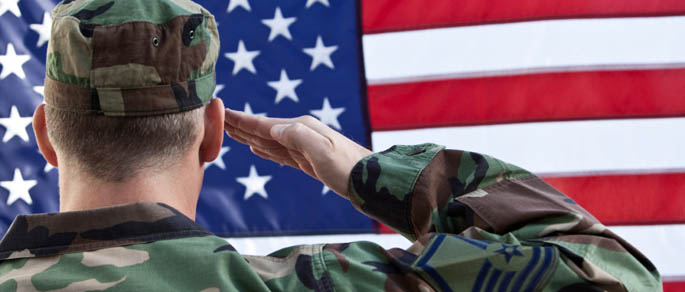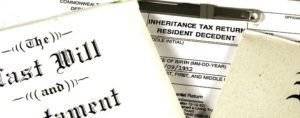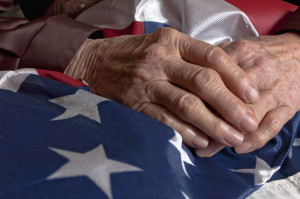
You might have heard it said or read it somewhere that the hardest job in the military is being a military spouse. How true it is. While the husband (or wife) is away serving his or her country, the other spouse is at home holding the home front down, taking care of everyday activities, taking care of the kids, paying bills, etc…
But did you know spouses are eligible to receive the Veterans Administration’s Aid and Attendance Benefit, even though they didn’t serve in the military themselves? They are. Want to know something else? Very few military spouses are taking advantage of this benefit.
There are more than 21 million living veterans in the United States today, according to the VA. These veterans served during World War II to the current War on Terrorism campaigns. What statistic isn’t available is the number of military spouses, widows and widowers, but you realize that figure must be in the millions, too.
Here’s another interesting figure: in 2011, the most recent year for which statistics are available, 38,076 veterans and 38,685 spouses were granted Aid and Attendance. Again, it’s not known how many people are not taking advantage of this special needs-based program that’s available to them or their surviving spouses.
Why not more? There are two obvious answers: one, the spouse may not be aware she is eligible for the benefit. Aid and Attendance has been referred to as the VA’s best kept secret. The second reason is the belief someone else could use that money more than Mom or Grandpa, who’s going through his or her life savings to pay the monthly assisted living bill. Maybe it’s a pride issue: too proud to ask for help. Those answers may sound silly, but it’s the truth. If the requirements are met, this is a tax-free monthly stipend that can be used for health care assistance at home or help subsidize the monthly bill at an assisted living facility.
As stated, there are eligibility requirements, and here’s that criterion:
- The veteran served at least 90 days of active military duty, one day of which was during a war-time period.
- The veteran was honorably discharged from the service. When applying for this benefit, the applicant would be asked to show his discharge papers, the DD-214.
- Must require the assistance of another person to perform some of the activities of daily living (ADLs): eating, bathing, toileting, dressing, and transferring (walking).
- Meet the income and countable asset criteria established by the VA.
- Must be 65 years and older or totally disabled.
And, of course, the veteran must have served during the times determined by the VA. Those dates are:
- World War II: Dec. 7, 1941 – Dec. 31, 1946
- Korean War: June 27, 1950 – Jan. 31, 1955
- Vietnam War: Feb. 28, 1961 – May 7, 1975
- Persian Gulf War: Aug. 2, 1990 – present
Military service is deemed as having served in the Army, Air Force, Navy, Marine and the Merchant Marines (particularly during World War II). Even if the veteran didn’t serve in the combat zone in 1943, 1952 or 1969, that doesn’t mean he or she may not qualify for Aid and Attendance. Grandpa could’ve served on a Navy cargo ship in the North Atlantic or South Pacific in 1943 or 1969 and qualify. Under the VA guidelines, you would qualify. However, if you were on a destroyer in 1949 or stationed in Germany in 1959, you wouldn’t qualify for Aid and Attendance. Even though you were drafted into the service and proudly served your country, that period of time was not considered wartime.
And don’t forget, Grandma or Great Aunt Sue might have served, too. During World War II, nearly 350,000 women served in uniform in groups such as the WAACs, WAVES, WASPS and the Army and Navy Nurses Corps. So it’s imperative to ask the ladies, too, if they served.
Once applied, keep in mind this isn’t a quick process. It might take six months or longer before you’re approved to receive Aid and Attendance. But don’t worry: once approved, the benefit is retroactive to the application date. So, if you applied on June 1, 2014, but we’re approved until Dec. 1, 2014, your first benefits check would be six-months worth. The following month would contain the regularly monthly amount.
Potential changes are on the horizon for the Aid and Attendance program. In June 2012, HR 2189 was introduced that could call for a three-year look-back period for someone applying for the Aid and Attendance Benefit. The VA look-back would be similar to Medicaid’s five-year look-back, where an applicant’s financial history is reviewed for improper transfers. At this writing, the bill was still being kicked about Congress. If signed into law, there is no timeframe as to when the VA look-back would begin.
Having a little more information about Aid and Attendance, and how it could benefit your Grandma or Great Aunt Sue, is it something you’re going to pursue? Is it something you should pursue?



